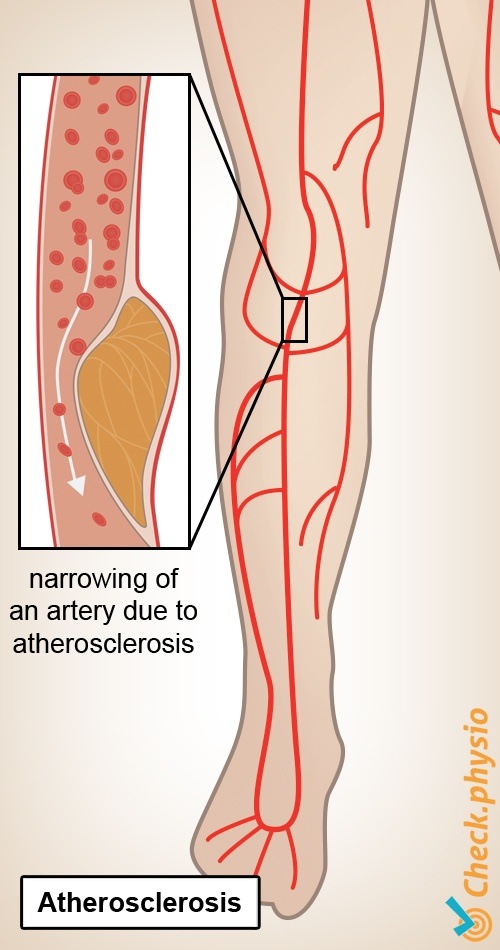A nurse is providing discharge teaching to a client who has peripheral arterial disease (PAD). Which of the following instructions should the nurse include in the teaching?
Adjust the thermostat so that the environment is warm.
Apply a heating pad on a low setting to help relieve leg pain.
Wear antiembolic stockings during the day.
Rest with the legs above heart level.
The Correct Answer is A
The nurse should instruct the client to adjust the thermostat so that the environment is warm because cold temperatures can cause vasoconstriction and worsen the symptoms of PAD, such as pain, numbness, and poor wound healing. The client should also avoid exposure to cold weather and wear warm clothing.
- Apply a heating pad on a low setting to help relieve leg pain is wrong because it can cause burns, vasodilation, and increased blood flow to the legs, which can increase the risk of bleeding and edema in PAD.
- Wear antiembolic stockings during the day is wrong because they can impair arterial circulation and cause ischemia and tissue damage in PAD. Antiembolic stockings are used to prevent venous thromboembolism, not arterial disease.
Rest with the legs above heart level is wrong because it can decrease arterial blood flow to the legs and worsen ischemia and pain in PAD. The client should rest with the legs at or below heart level to promote arterial circulation.
Nursing Test Bank
Naxlex Comprehensive Predictor Exams
Related Questions
Correct Answer is B
Explanation
The correct answer is B
Choice B reason: Intermittent claudication
Intermittent claudication is a characteristic symptom of PAD in the early stage, due to the reduced blood flow to the muscles during exercise. It is a cramping pain in the legs that occurs with walking and is relieved by rest.
Choice A reason: Dependent rubor is a sign of PAD in the advanced stage, due to the impaired vasodilation and reactive hyperemia. It is a reddish color of the lower extremities that occurs when they are lowered and disappears when they are elevated.
Choice C reason: Foot ulcers are a complication of PAD in the late stage, due to the poor wound healing and tissue necrosis. They are usually located on the toes, heels, or pressure points.
Choice D reason: Rest pain is another sign of PAD in the late stage, due to the severe ischemia and nerve damage. It is a persistent pain in the feet or toes that occurs at night and is not relieved by rest.

Correct Answer is D
Explanation
Nitroglycerin is a vasodilator that relaxes smooth muscle in blood vessels and reduces myocardial oxygen demand. It is used to treat and prevent angina atacks. A common side effect of nitroglycerin is headache, which is caused by cerebral vasodilation. The nurse should advise the client to take a mild analgesic, such as acetaminophen, to relieve the headache. The headache usually subsides with continued use of nitroglycerin.
The other options are not correct because:
"Take only one dose of nitroglycerin to reduce the risk of getting a headache." This statement is incorrect because it may compromise the effectiveness of nitroglycerin in relieving angina. The client should follow the prescribed dosage and frequency of nitroglycerin, which is usually one tablet every 5 minutes for up to three doses, as needed for chest pain.
"There's nothing that can be done to relieve the headaches that nitroglycerin causes." This statement is incorrect because it is discouraging and dismissive of the client's concern. The nurse should acknowledge the client's
discomfort and offer suggestions for managing the side effect, such as taking a mild analgesic or lying down in a dark room.
"We will ask the provider to prescribe a different medication for you." This statement is incorrect because it implies that nitroglycerin is not suitable for the client and may cause unnecessary anxiety or confusion. The nurse should explain that nitroglycerin is an effective and safe medication for angina and that the headache is a common and transient side effect that can be managed with simple measures. The nurse should also inform the client that there are other forms of nitroglycerin, such as patches or sprays, that may have less headache-inducing effects. However, changing the medication or the route of administration should be done only after consulting with the provider.
Whether you are a student looking to ace your exams or a practicing nurse seeking to enhance your expertise , our nursing education contents will empower you with the confidence and competence to make a difference in the lives of patients and become a respected leader in the healthcare field.
Visit Naxlex, invest in your future and unlock endless possibilities with our unparalleled nursing education contents today
Report Wrong Answer on the Current Question
Do you disagree with the answer? If yes, what is your expected answer? Explain.
Kindly be descriptive with the issue you are facing.
